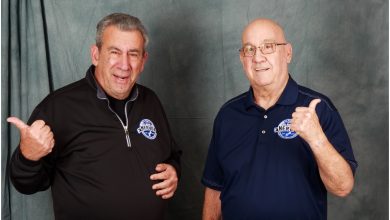See Your RV Dealership Through Your Customers’ Eyes
Improve your dealership’s customer experience by observing all aspects of your store — from parking and signage to in-store layout and merchandising.

A positive customer experience depends on what they encounter as a they drive up, park, walk up to, into and through your store. I recently wrote about having pets in your store or dealership. They most often create good memories for your customers. When was the last time you experienced your dealership through the eyes of your customers?
If you have the budget, the first thing you can do is hire a customer experience expert. This person secretly shops your store and then writes up a report on the experience. Then, they spend a day or two in your store observing customer behavior. If you want to go to the next step, that same person will conduct exit surveys of your customers to find out their thoughts about their in-store experience. Reports are generated, and you learn how your customers move through your store, what they’re experiencing, if they like and respect you and your team, if they like your store along with a myriad other important information.
If you don’t have the budget for this type of expert, it may be time to do this yourself. A good friend of mine, Anne-Marie Luthro, is a customer experience pro. I asked her how you can rediscover your business from the customer’s point of view. Our combined ideas are below in this comprehensive, easy-to-do list.
- How do people come to your location? If they are driving, how is the parking experience? Easy? Challenging? Is there lighting at night? Are there hard-to-see steps? Is there a railing for people climbing any steps? Do you have clear signs indicating where to park (if needed) and where the front door is located? If service is through another door, is it easy to see from the parking lot?
- Are the signs clear, clean and fresh-looking?
- Is there anything blocking easy access to your front door? This can be planters, a garbage can, poorly placed outdoor signs, or a tree or bush limiting clear access.
- Walk through the door as if it’s your first time. What is the light level of the store? Do your eyes have to adjust to the dark? Does the temperature feel comfortable to you? How does the store smell? These are your animal perceptions — do I feel safe and comfortable entering this “cave”?
- Walk through your store with a fresh eye. Pretend you’re seeing it for the first time from a customer’s point of view. Disregard your reasons why something hasn’t been taken care of or done properly. Just look at what is right now.
- What do you see first, second and third? What message is each visual giving you?
- Does someone greet you? Of course, you’re not a customer and you’re known — but a greeting is important no matter what role you play in the organization.
- Break up the store by areas and write a short sentence about each one. Do any areas of the store feel good? Uncomfortable? Crowded? Disorganized? Dirty? Clean? Very appealing? Very boring or unappealing? Analyze each area and write down your impressions.
- Are your interior signs informative? Easy to read? Are they clean and fresh or wilted and/or crinkled? Are there enough or too many?
- As you work for or own the store, the shopping experience will be skewed toward making you happy. So, chances are good you won’t be able to get a good read on that. So next, ask someone (or several people) you know who aren’t known by the people who work in the store to do exactly what you’ve just done, including buying something. You can always either reimburse them, or they can return it and report on that experience as well. This silent shopper can be a friend, a relative — anyone who is willing to do so for a nice dinner or a friendly discount off the products you sell. (Not necessarily an RV!) Or you can hire a professional.
Once you have processed the information about the customer journey and experience, realize that what you’ve gleaned is just a tiny bit of what you really need to know. That’s where your sales staff comes in. Develop a form they can have handy wherever they are standing or sitting. Their job is to track each customer as they come into the store and note:
- Do they stand in the doorway to look around before heading in a direction?
- Which way do they go? Which aisle do they go down first?
Following them around the store would be creepy and annoying, so you can only track them as far as you can see them from where you’re standing.
The form can be an overhead floorplan, and your salesperson can just draw a line showing how each customer moved through the store. Adding the date and time per customer gives you extra information that can help you figure out your busier times of the day and week.
After every salesperson does this for a week, you’ll have a pretty good idea of how people are moving through your store and which aisles are your “power” aisles. Seasonal items go in the power aisles, and they need to sell out before the season is over.
Now that you have a good idea of your customer’s shopping journey and a sense of their experience, it’s time to add another experiential part to make the entire shopping journey more memorable.
People love to see something new! It makes them feel like they’re on top of things and have early access. It can make people feel special — which definitely adds favorably to their experience.
Trader Joe’s has a “See What’s New” area in each of their stores. Almost everyone who shops there checks it out. There’s a strong sign above the shelving endcap to identify the area. It’s a different design in each store as they hire local artists to personalize the signs to relate to the local areas. Consider adding a “What’s New” section to your store and fill it with whatever accessories and chemicals that are new without worrying whether the merchandise works together. You should also house the new merchandise where it belongs throughout your store. Add a “NEW” arrow or sign to these new products sprinkled throughout your parts and accessories shelves.
With the current emphasis on “Made in America” merchandise, have small but clear signs made to add to every product that is genuinely made in the U.S. There are many styles to choose from, but just pick one and stick with it.
Once again, create a separate area for the Made in America products, plus house each piece in their appropriate category. There will be double exposure for these products and a strong memory in the minds of your customers. They will remember the “New” and “Made in America” signs, as these signs will make the merchandise feel fresh and more appealing.
As Nike says, “Just Do It.” As soon as you know what’s going on in your RV dealership, the sooner you can take action to rectify or enhance your customer’s experience.



